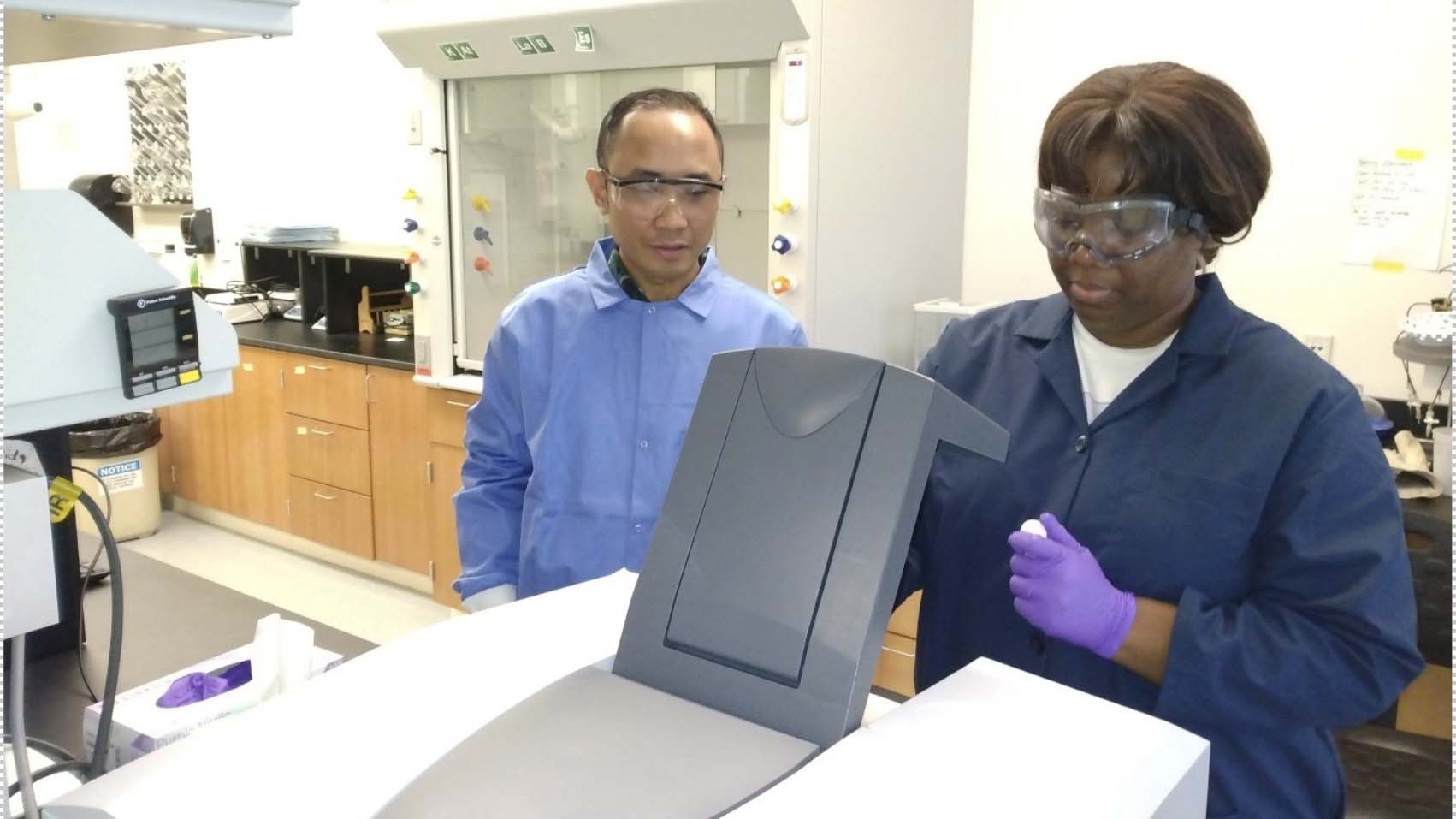Cobbinah-Dumancas Work Published in Peer-Reviewed Journal

Research on chemometrics by MS in Chemistry graduate student, Elizabeth Cobbinah, and Associate Professor of Chemistry, Dr. Gerard Dumancas, was published in a peer-reviewed journal. The article titled “Using Near-Infrared Spectroscopy and Stacked Regression for the Simultaneous Determination of Fresh Cattle and Poultry Manure Chemical Properties” was published in Chemosensors. Dr. Dumancas, who leads a research group of one graduate and three undergraduate students, focuses his research on the development and application of chemometrics and spectroscopy for agricultural and biological analyses.
Chemometrics is an advanced statistics and computer application technique that is primarily used in analytical chemistry. Using chemometrics, the research group was able to simultaneously predict the concentrations of various chemical properties present in fresh cattle and poultry manure in only one minute, and without any need for complex chemical analysis.
In their latest study, the research team utilized a stacked regression ensemble approach, which collated the performance of the best-performing machine learning techniques.
The method coupled with a near infrared spectrometer, an instrument that uses a near infrared light, can be an alternative to the traditionally used partial least squares algorithm for a more accurate way of quantifying very important chemical properties in cattle and poultry manure. This method could offer an affordable, rapid, and more accurate means of quantifying chemical properties of manure samples – a very important approach for farmers in managing soil and mitigating water pollution.
Dr. Dumancas also published a research article titled “Comprehensive Examination of Cu, Pb, Zn, Fe, Mn and Cd in Lackawanna County Waters, Northeastern Pennsylvania” in Analytica in 2022. Dr. Dumancas with his undergraduate students in Instrumental Analysis laboratory course, Jake Butka and Adam Mehall, were able to perform a preliminary quantitative determination of the concentration of various metals found in Lackawanna County water sources.
Since coming to The University of Scranton this past spring, Dr. Dumancas published a total of 15 peer-reviewed manuscripts in several peer-reviewed journals, such as Spectrochimica Acta Part A: Molecular and Biomolecular Spectroscopy, Analytical Letters, Trends in Genetics, Current Epidemiology Reports, Analytica, and Chemosensors. He currently holds more than $2 million in research grants.






